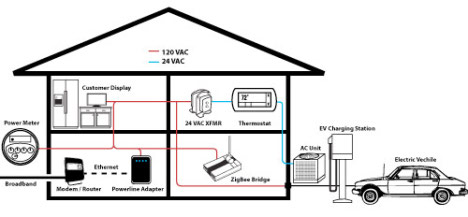 The last few months have been filled with exciting announcements in the wireless space. From Wireless DisplayPort, to Direct Connect, to the opening of the airwaves for a new Wi-Fi Spectrum, the wireless industry is seeing a wave of movements promising great opportunities for developers. Now, the Wi-Fi Alliance and the HomePlug Powerline Alliance are bringing us a new cause for celebration. The organizations have announced that they are partnering to create joint standards, allowing for interoperability among connected home applications. These standards will also allow developers to conduct interoperability testing for new products.
The last few months have been filled with exciting announcements in the wireless space. From Wireless DisplayPort, to Direct Connect, to the opening of the airwaves for a new Wi-Fi Spectrum, the wireless industry is seeing a wave of movements promising great opportunities for developers. Now, the Wi-Fi Alliance and the HomePlug Powerline Alliance are bringing us a new cause for celebration. The organizations have announced that they are partnering to create joint standards, allowing for interoperability among connected home applications. These standards will also allow developers to conduct interoperability testing for new products.
This new partnership aims to facilitate seamless interoperability between Wi-Fi and HomePlug devices in smart grid applications across home networks. These organizations, both members of the Smart Grid Interoperability Panel (SGIP), are looking to promote Smart Energy 2 Applications Profile (SEP 2.0) across a diverse range of wireless and wired networks. This initial standard will support energy management for wired and wireless home networks. The organizations are planning to jointly promote their wired and wireless technologies to homeowners.
“Working with the HomePlug Powerline Alliance will facilitate interoperability between Wi-Fi equipment and devices connected to power line home networks,” said Edgar Figueroa, CEO of the Wi-Fi Alliance, in the recent release. “This collaboration will help bring about a great user experience with smart home technology.”

